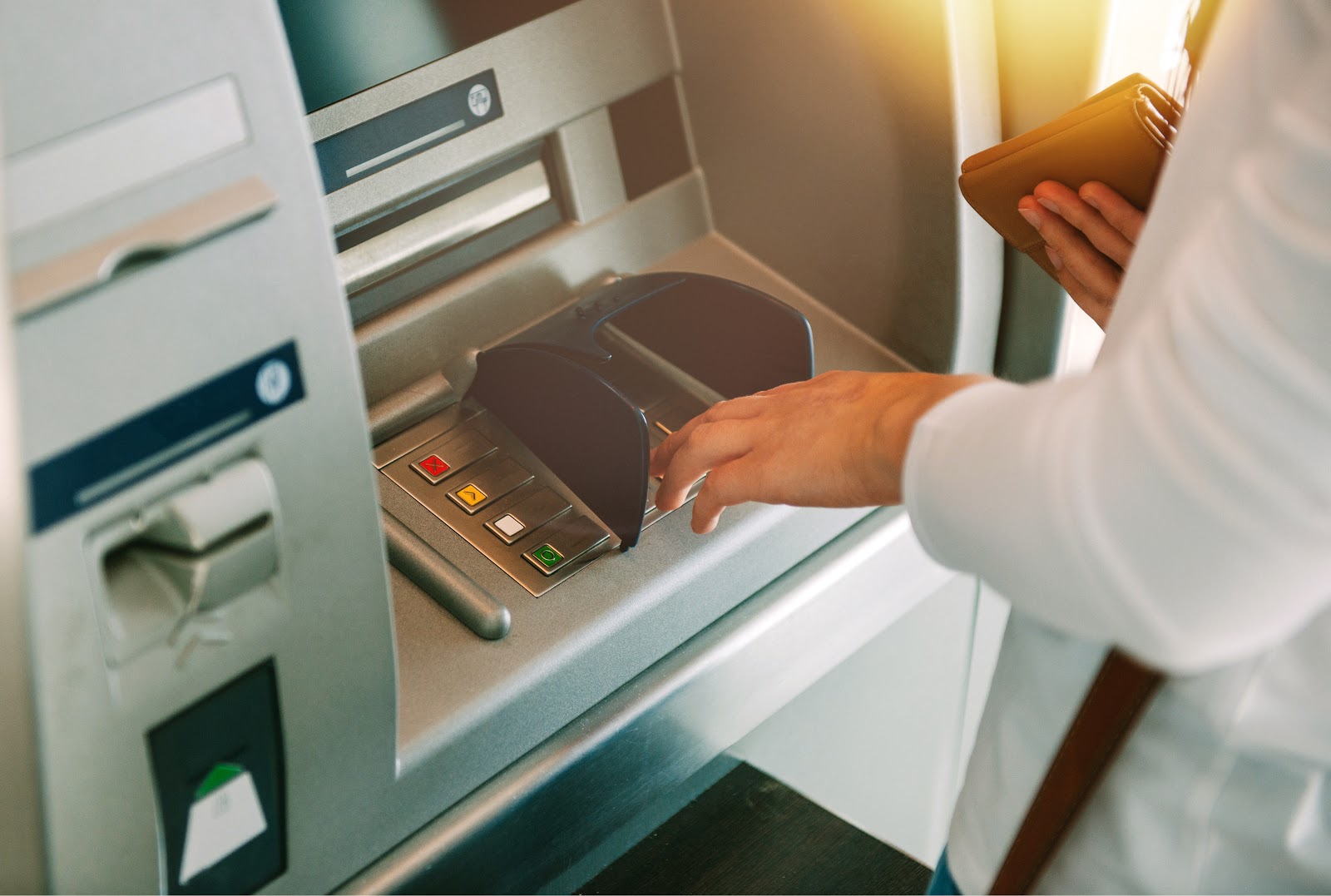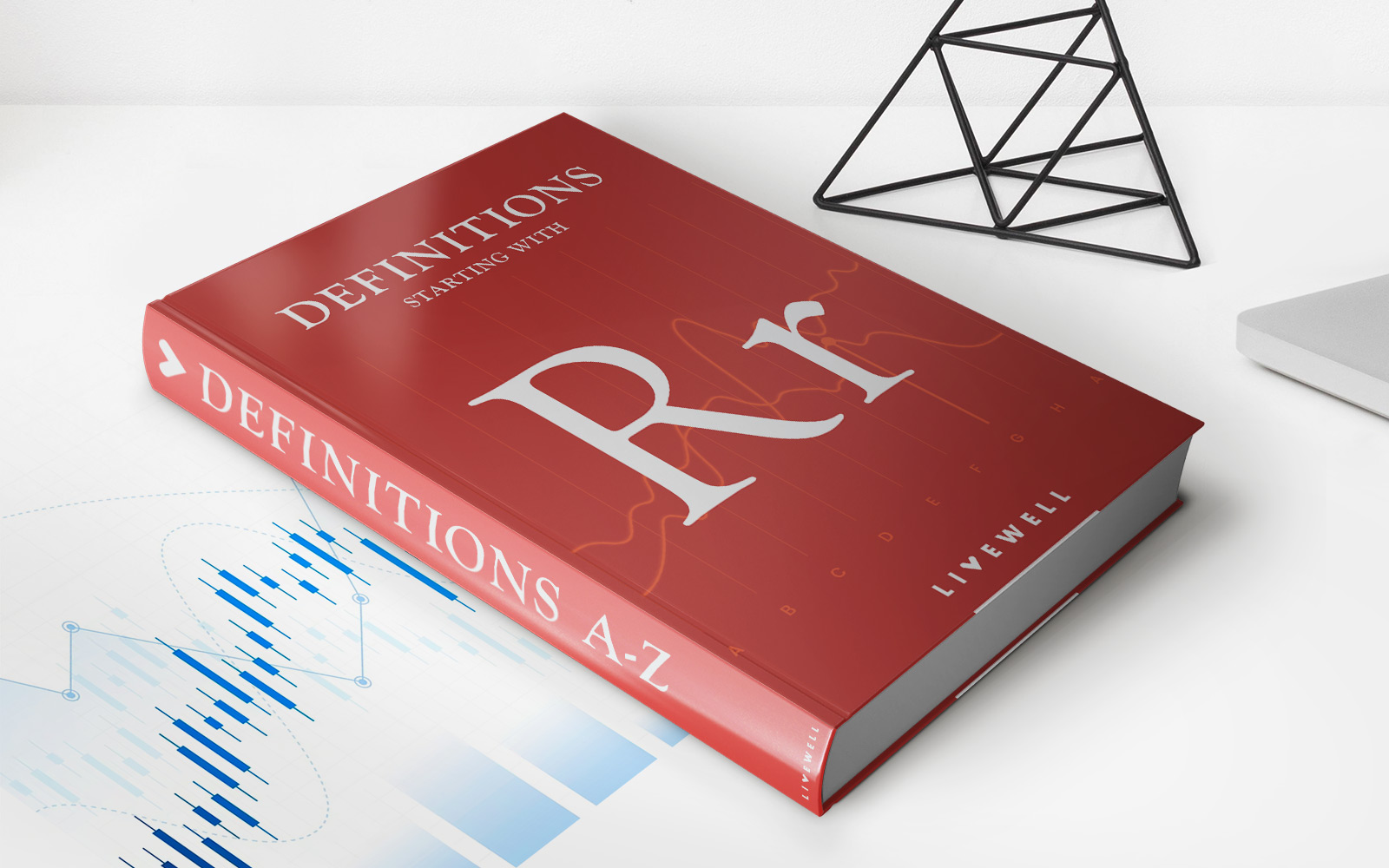

Finance
What Is A Preferred Line Of Credit
Published: January 7, 2024
Looking for flexible financing options? Discover what a preferred line of credit is and how it can support your financial needs. Explore finance solutions today!
(Many of the links in this article redirect to a specific reviewed product. Your purchase of these products through affiliate links helps to generate commission for LiveWell, at no extra cost. Learn more)
Table of Contents
- Introduction
- Definition of a Preferred Line of Credit
- How Does a Preferred Line of Credit Work?
- Benefits of a Preferred Line of Credit
- Drawbacks of a Preferred Line of Credit
- How to Qualify for a Preferred Line of Credit
- How to Use a Preferred Line of Credit
- Alternatives to a Preferred Line of Credit
- Conclusion
Introduction
Managing finances is an essential aspect of our lives. Whether it’s for personal or business purposes, having access to a reliable source of credit can provide the flexibility and financial stability needed to navigate unforeseen expenses and seize opportunities. One such financial tool that individuals and businesses can utilize is the preferred line of credit.
A preferred line of credit is a flexible financing option that offers borrowers a predetermined credit limit and allows them to borrow funds whenever needed. Unlike traditional loans, where borrowers receive a lump sum of money upfront, a preferred line of credit offers a revolving source of funds that can be accessed as needed. It is a popular choice for individuals and businesses looking for financial flexibility and a safety net for unexpected expenditures.
Throughout this article, we will explore the definition and functionality of a preferred line of credit, the benefits it offers, how to qualify for one, and alternative financing options to consider. By the end, you will have a comprehensive understanding of the preferred line of credit and its potential applications.
Definition of a Preferred Line of Credit
A preferred line of credit, also known as a PLOC, is a financial product that provides borrowers with access to a predetermined amount of funds that they can borrow from whenever they need it. It is a form of revolving credit, similar to a credit card, but with higher credit limits and typically lower interest rates.
Unlike a traditional loan, where the borrower receives a lump sum of money upfront and repays it over a fixed period, a preferred line of credit offers more flexibility. Borrowers can withdraw funds from their available credit limit as needed, up to the established credit limit. As they repay the borrowed amount, the line of credit becomes available for borrowing again, making it an ongoing source of funds.
The specific terms and conditions of a preferred line of credit, such as the credit limit, interest rate, and repayment terms, vary depending on the lender and the borrower’s creditworthiness. In most cases, lenders require collateral, such as real estate or other valuable assets, to secure the line of credit. This minimizes the risk for the lender and allows them to offer more favorable terms to borrowers.
A preferred line of credit is often utilized by businesses to manage working capital needs, cover operational expenses, or finance short-term projects. Similarly, individuals can use it for personal expenses like home improvements, education costs, or managing unexpected medical bills.
It’s important to note that while a preferred line of credit may be similar to a credit card, there are some distinct differences. A preferred line of credit typically offers higher credit limits and lower interest rates compared to credit cards. Additionally, a preferred line of credit may have fewer fees and charges associated with it. However, it requires collateral and may have stricter eligibility criteria than a credit card.
Now that we understand the basic definition of a preferred line of credit, let’s delve deeper into how it works and its key features.
How Does a Preferred Line of Credit Work?
A preferred line of credit operates similarly to a credit card but with some key differences. Here’s how it typically works:
-
Application and Approval: To obtain a preferred line of credit, borrowers must apply with a financial institution or lender. The application process involves providing personal or business information, financial statements, and potentially collateral documentation. Lenders assess the borrower’s creditworthiness and may set a credit limit based on factors such as credit history, income, and assets.
-
Credit Limit: Once approved, the borrower is assigned a credit limit, which represents the maximum amount they can borrow from the line of credit. This limit is based on factors such as the borrower’s financial standing, collateral, and the lender’s evaluation.
-
Accessing Funds: Borrowers can access the funds from their preferred line of credit in various ways, such as writing checks, using a debit card linked to the account, or transferring funds online. Borrowers only pay interest on the amount borrowed and can choose to repay the borrowed amount in full or make minimum monthly payments.
-
Repayment: As borrowers repay the borrowed amount, the line of credit becomes available again. This feature distinguishes a preferred line of credit from a traditional loan, as it allows borrowers to reuse the funds as needed without submitting new applications or going through additional approval processes.
-
Interest and Fees: Borrowers are charged interest on the amount they borrow from their preferred line of credit. The interest rates can be variable or fixed, depending on the terms of the agreement. Additionally, there may be fees associated with the line of credit, such as an annual fee or transaction fees. It’s important for borrowers to carefully review and understand the terms and fees associated with their specific line of credit.
Overall, a preferred line of credit offers borrowers the flexibility to borrow and repay funds as needed within the established credit limit. It provides a safety net for covering unexpected expenses or taking advantage of business opportunities without the need for constant reapplication or additional loan agreements.
Next, let’s explore the benefits that a preferred line of credit can offer to borrowers.
Benefits of a Preferred Line of Credit
A preferred line of credit offers numerous benefits to both individuals and businesses. Here are some key advantages:
-
Flexibility: One of the main advantages of a preferred line of credit is the flexibility it offers. Borrowers can access funds as needed, up to the established credit limit, without having to reapply for a new loan. This flexibility allows for better cash flow management and the ability to respond quickly to unexpected expenses or opportunities.
-
Lower Interest Rates: Preferred lines of credit typically have lower interest rates compared to other forms of borrowing, such as credit cards or personal loans. This can result in significant savings on interest payments over time, especially if the line of credit is used for larger expenses or ongoing financing needs.
-
Only Pay for What You Use: With a preferred line of credit, borrowers only pay interest on the amount they borrow. This means they are not charged interest on the entire credit limit. This flexibility allows borrowers to control their interest costs by borrowing only what they need.
-
Financial Safety Net: Having a preferred line of credit in place provides a financial safety net for unexpected expenses or emergencies. It acts as a buffer, allowing borrowers to access funds quickly when needed without resorting to higher-interest options. This can provide peace of mind and financial security.
-
Business Growth: For businesses, a preferred line of credit can be a valuable tool for managing working capital, covering seasonal fluctuations, funding expansions, or taking advantage of growth opportunities. It provides the necessary financial flexibility to seize business prospects and maintain a steady cash flow.
These benefits make a preferred line of credit an attractive financing option for both individuals and businesses. However, it is important to consider the potential drawbacks as well. Let’s explore some of the drawbacks associated with a preferred line of credit.
Drawbacks of a Preferred Line of Credit
While a preferred line of credit offers many advantages, it’s important to consider the potential drawbacks before utilizing this financing option. Here are some drawbacks to be aware of:
-
Collateral Requirement: In most cases, a preferred line of credit requires collateral to secure the loan. This means borrowers need to pledge assets, such as real estate or investments, as security for the line of credit. If the borrower is unable to repay the borrowed amount, the lender may seize the collateral to recover their losses.
-
Eligibility Criteria: Qualifying for a preferred line of credit may be more challenging than obtaining a regular credit card or personal loan. Lenders often have strict eligibility criteria, including a strong credit history, sufficient income, and a stable financial standing. This could make it difficult for individuals or businesses with less-established credit or financial history to secure a preferred line of credit.
-
Interest Charges: While preferred lines of credit generally have lower interest rates compared to credit cards, borrowers still need to pay interest on the borrowed amount. If the borrower carries a balance for an extended period, the accumulated interest can increase the overall cost of borrowing.
-
Overspending: The ease of access to funds through a preferred line of credit can tempt borrowers to overspend or rely too heavily on credit. This may lead to a cycle of debt and financial strain if the borrowed funds are not managed responsibly.
-
Reduced Loan Availability: Utilizing a preferred line of credit can impact the borrower’s overall borrowing capacity. Since lenders view a line of credit as potential debt, it may affect the borrower’s ability to secure additional financing or loans in the future.
The drawbacks of a preferred line of credit should be carefully assessed and considered in relation to your financial circumstances and borrowing needs. It’s essential to evaluate whether the benefits outweigh the potential drawbacks before committing to this form of financing.
Now that we are aware of the drawbacks, let’s explore the qualifications and criteria to obtain a preferred line of credit.
How to Qualify for a Preferred Line of Credit
Obtaining a preferred line of credit requires meeting certain eligibility criteria set by the lender. While qualification requirements may vary from one financial institution to another, here are some common factors considered when applying for a preferred line of credit:
-
Credit Score: Lenders typically consider the borrower’s credit score as an indicator of their creditworthiness. A higher credit score increases the chances of qualifying for a preferred line of credit with better terms and higher credit limits. It’s essential to maintain a good credit score by paying bills on time, maintaining a low credit utilization ratio, and avoiding defaults or bankruptcies.
-
Income and Financial Stability: Lenders assess the borrower’s income and financial stability to determine their ability to repay the borrowed amount. They may require proof of steady income, such as salary slips or bank statements, to ensure that the borrower is financially capable of honoring their repayment obligations.
-
Collateral: Some lenders may require collateral to secure the preferred line of credit. Collateral can include real estate, investment portfolios, or other valuable assets that can be used as a form of security for the loan. Providing collateral reduces the lender’s risk and increases the likelihood of approval.
-
Business Financials (for businesses): If applying for a business preferred line of credit, lenders may require financial statements, such as profit and loss statements, balance sheets, and cash flow projections. This helps lenders assess the financial health and viability of the business and determine if it can sustain the loan repayment.
-
Credit History: Lenders review the borrower’s credit history to gauge their past borrowing behavior and repayment patterns. A clean credit history, with no missed payments or defaults, enhances the chances of qualifying for a preferred line of credit. It’s crucial to review and fix any errors or discrepancies in your credit report before applying.
Meeting these qualification criteria increases the likelihood of obtaining a preferred line of credit with favorable terms and conditions. However, it’s important to note that each lender has its own specific requirements, so it’s advisable to reach out to different financial institutions to find the best fit for your needs.
Now that we understand the qualification process, let’s dive into how a preferred line of credit can be effectively used.
How to Use a Preferred Line of Credit
Once approved for a preferred line of credit, understanding how to effectively use it is crucial to maximize its benefits. Here are some key considerations on how to use a preferred line of credit:
-
Establish a Plan: Before accessing funds from your preferred line of credit, it’s important to have a clear plan for how you will use the borrowed funds. Whether it’s for personal expenses or business needs, outline your goals and create a budget to ensure responsible financial management.
-
Only Borrow What You Need: While a preferred line of credit provides you with a credit limit, it’s wise to borrow only the amount necessary to meet your immediate needs. Avoid unnecessary borrowing or overspending, as it can lead to increased debt and interest payments.
-
Monitor Interest Rates: Check the interest rate terms of the preferred line of credit and stay aware of any changes. Understanding the interest charges will help you plan for repayments and manage your overall borrowing costs effectively.
-
Make Timely Payments: Paying off the borrowed amount or making regular monthly payments is crucial to maintaining a positive credit history and avoiding unnecessary interest charges. Set up automatic payments or reminders to stay on top of your repayment schedule.
-
Reassess and Review: Regularly review your usage of the preferred line of credit. Assess whether you’re utilizing it for its intended purpose and if it’s still the most cost-effective financing option for your needs. Consider alternative sources of funding or refinancing options if necessary.
When using a preferred line of credit for business purposes, it’s important to closely track the funds borrowed and separate business expenses from personal ones. This ensures accurate bookkeeping and helps with tax compliance.
Overall, using a preferred line of credit responsibly and purposefully can provide you with the financial flexibility and support you need. It’s essential to take advantage of its benefits while being mindful of your borrowing capacity and repayment obligations.
Now, let’s explore some alternatives to a preferred line of credit that you might consider.
Alternatives to a Preferred Line of Credit
While a preferred line of credit can be a useful financing tool, it’s important to explore alternative options to determine which best suits your needs. Here are some alternatives to consider:
-
Traditional Loans: If you have a specific financing need and prefer a structured repayment plan, a traditional loan may be a suitable option. Unlike a preferred line of credit, a loan provides you with a lump sum upfront, which you repay over a fixed term with regular installments and interest.
-
Credit Cards: For smaller expenses or short-term financing, credit cards can be a convenient alternative. They offer quick access to funds with a predetermined credit limit. However, it’s crucial to manage credit card debt responsibly and pay off the balance in a timely manner to avoid high interest charges.
-
Home Equity Line of Credit (HELOC): If you are a homeowner, a HELOC allows you to borrow against the equity you have built in your home. This revolving line of credit is secured by your property, typically offers lower interest rates than other forms of credit, and can be used for various purposes.
-
Personal Savings: If possible, tapping into your personal savings can be a cost-effective alternative. By using your own funds, you avoid incurring interest charges, and there are no repayment obligations or potential impact on your credit history. However, depleting your savings should be carefully considered.
-
Invoice Financing: For businesses, invoice financing or factoring allows you to borrow against your outstanding accounts receivable. This can help improve cash flow and provide immediate access to funds while waiting for customers to make payments.
Each alternative has its own advantages and considerations, so it’s crucial to evaluate your specific needs, financial situation, and repayment capabilities before choosing the most appropriate option.
As with any financial decision, consulting with a financial advisor can provide valuable insights and guidance to help you make an informed choice.
Now, let’s wrap up our discussion on preferred lines of credit.
Conclusion
A preferred line of credit is a valuable financial tool that provides individuals and businesses with flexibility and access to funds when needed. It offers numerous benefits, including the ability to borrow and repay funds as necessary, lower interest rates compared to credit cards, and the financial safety net for unexpected expenses or business growth opportunities. However, there are also some drawbacks to consider, such as the collateral requirement and potential overspending.
To qualify for a preferred line of credit, borrowers need to meet certain eligibility criteria, including a good credit score, stable income, and potentially collateral. It is important to use a preferred line of credit responsibly by establishing a clear plan, borrowing only what is needed, making timely repayments, and reviewing usage periodically.
If a preferred line of credit is not the right fit for your financial needs, there are alternative options available, such as traditional loans, credit cards, home equity lines of credit, and personal savings. Each alternative has its own advantages and considerations, so it’s essential to evaluate them based on your specific circumstances.
In conclusion, a preferred line of credit can be a powerful financial tool for managing cash flow, addressing immediate financial needs, or seizing business opportunities. By understanding how it works, its benefits and drawbacks, and considering alternatives, you can make an informed decision and utilize this form of credit effectively to meet your financial goals.














